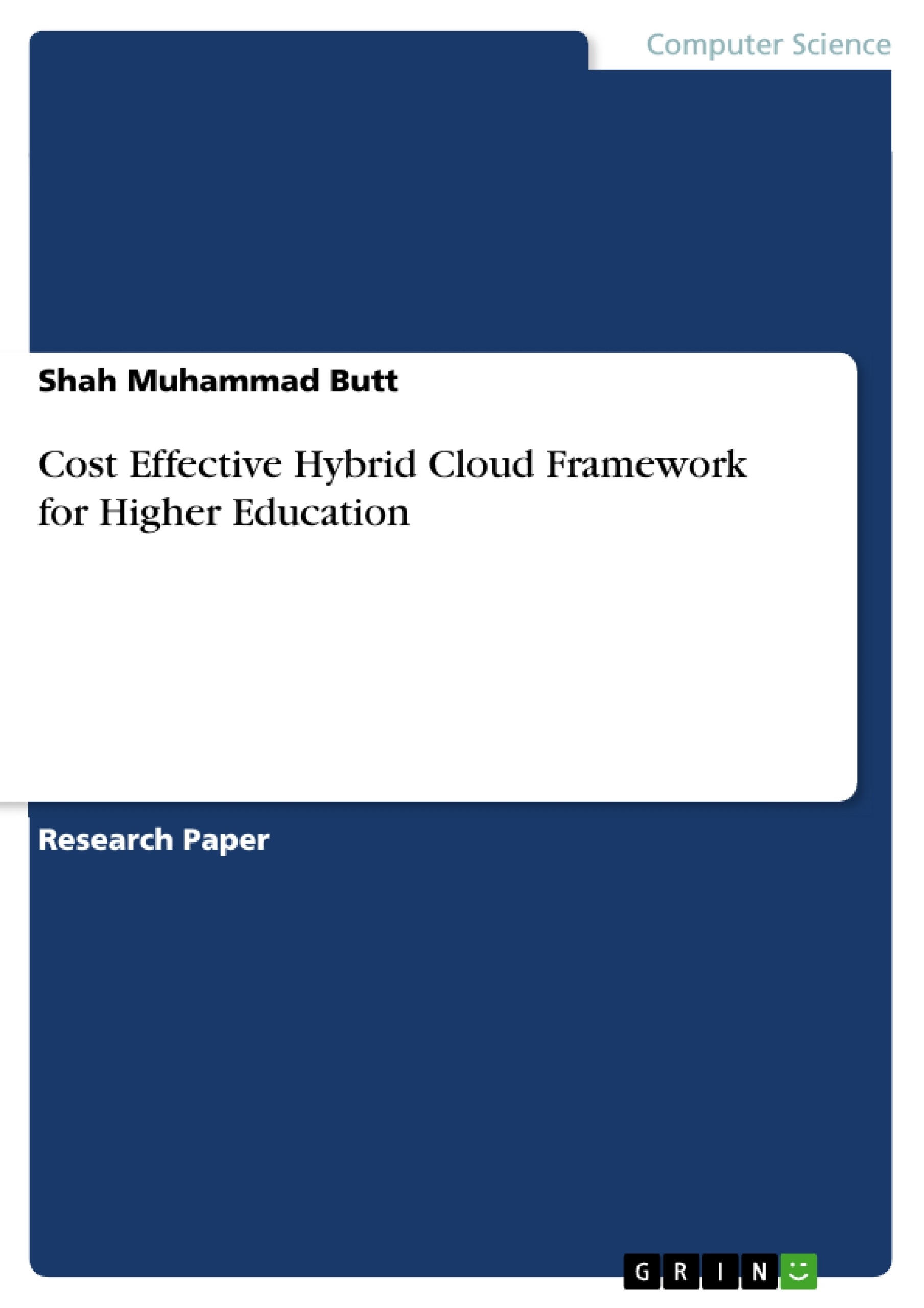Present Financial crisis in Higher Educational Institutes (HEIs) facing lots of problems considerable budget cuts, make difficult to meet the ever growing IT based research and learning needs, institutions are rapidly planning and promoting cloud based approaches for their academic and research needs. A cost effective Hybrid Cloud framework for HEI’s will provide educational services for campus or intercampus communication. Hybrid Cloud Framework comprises Private and Public Cloud approaches. This paper will propose the framework based on the Open Source Cloud (OpenNebula for Virtualization, Eucalyptus for Infrastructure and Aneka for programming development environment) combined with CSP’s services which are delivered to the end-user via the Internet from public clouds: Google, Microsoft, Zoho, Salesforce etc.
Abstract
Present Financial crisis in Higher Educational Institutes (HEIs) facing lots of problems considerable budget cuts, make difficult to meet the ever growing IT based research and learning needs, institutions are rapidly planning and promoting cloud based approaches for their academic and research needs. A cost effective Hybrid Cloud framework for HEI’s will provide educational services for campus or intercampus communication. Hybrid Cloud Keyword: Hybrid Campus Cloud, Open Source, Educational Services.
I. Introduction
Cloud computing [1] is provide computing services and network resource sharing with minimum hardware and management requirements where the inattentive infrastructure capacity is highly adoptable. Cloud Computing is a platform [2] that provides educational resources for researchers and enables users being attached like a single machine over the
Framework comprises Private and Public Cloud approaches. This paper will propose the framework based on the Open Source Cloud (OpenNebula for Virtualization, Eucalyptus for Infrastructure and Aneka for programming development environment) combined with CSP’s services which are delivered to the end-user via the Internet from public clouds: Google, Microsoft, Zoho, Salesforce etc.
Internet [3]. Cloud Computing offer sharing of resources (Documents, Databases, Network, Storage and learning sources) using Internet. To overcome the burden of IT application development using public cloud services [4] solutions within the campus. Public Cloud resolves high energy consumption problems, provides efficiently resource availability with very low
investment and simple management [5].Using virtualization technology can improve the usage of resources and use load balancing to reproduce the computing resources[5]. The hybrid campus cloud could be the group of services offered by public and private Cloud. Example: ERP,
II. Background and Related Work
Providing consistent IT services for learning and research in higher educational institutes have facing great [6] challenges. Cloud Computing may be considered [6] a cost effective and sustainable IT solution for educational ecosystem. Cloud computing is a paradigm shifting that provides applications, data storage and processing power over the Internet. The three service models of the cloud are SaaS, PaaS and IaaS; all are enable users to run and store applications and data online. SaaS or Software as a Service is the easiest way to spread software services where middleware applications are accessed over the Internet. Google, Microsoft and Zoho each offer online word processor, spreadsheets and presentation package. The advantages of SaaS are that all applications are free of charged on a subscription basis; SaaS applications are accessible from any computer on the Internet and facilitate collaborative working. [6] This said in business there are many situations where generic applications are not satisfies. PaaS
LMS, Documents and Email. However, Keeping in view of current global financial crisis focusing in major cuts in the Higher Education; Public and Private collaborative Cloud services will help to overcome learning and resource availability issues.
or Platform as a Service provides set of tools and development environment that allow users to create their own new online applications; Google App Engine that enables anybody to develop, run and maintain their specific applications using Google’s platform. Microsoft Azure also offering PaaS cloud that permits users to design and run windows applications in Microsoft’s region of the cloud, Salesforce is also a big player of the PaaS landscape with an offering called force.com. By using the IaaS or Infrastructure as a Service model organizations get infrastructure components such as computing power and storage capacity. The organizations have control over the entire IT infrastructure including the hosting environment and replications; however the organization needs to allocate the additional staff to maintain and infrastructure and the applications. Deployment of cloud services [7] by using four development models. Public cloud, Private cloud, Community cloud and Hybrid cloud. Public cloud is owned by cloud
[...]
- Quote paper
- Shah Muhammad Butt (Author), 2013, Cost Effective Hybrid Cloud Framework for Higher Education, Munich, GRIN Verlag, https://www.grin.com/document/214421




